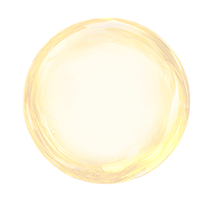Weeks 9-10
After two months of development, the baby can see objects within 1 meter clearly, and limb movements become more rhythmic. Although nighttime sleep duration increases, babies often cry due to external discomforts (temperature, light), subjective needs (hunger, drowsiness, fear), or illness—requiring parents to observe carefully.
Stage Focus: Administer the first polio vaccine (sugar pill). For vaccine-related questions, use Yili Aier Club's Facebook or Whatsapp "Aier Vaccine" feature for inquiries.
3 Ways to Soothe a Crying Baby
Sucking Soothing Method
Calm emotions through breastfeeding, bottle-feeding, or a pacifier. Note: Sterilize utensils daily to prevent infection.
Intimate Contact Method
Hold the baby upright, pat the back gently, and communicate in a soft voice to enhance security and promote parent-child interaction.
Music Calming Method
Play lullabies or soft music to help the baby calm down and cultivate an optimistic temperament.
Auxiliary Tip: Take the baby out to observe new environments and divert attention.
Weeks 11-12
Nearly 3-month-old babies can make various sounds, with strengthened neck strength. They start attempting to grasp bedside toys and become sensitive to height changes (e.g., startle when suddenly lowered).
Common Issue: Infant eczema (influenced by genetics, environment, and allergies), requiring prevention of scratching and infection.
4 Key Points for Eczema Care
Skin Care
Keep skin dry and clean. Bathe with water at 40-45°C. Suspend bathing if eczema is severe.
Hygiene Management
Change clothes and diapers daily; rinse detergent thoroughly. Regularly trim and file nails to prevent scratching. Choose pure cotton, breathable clothing.
Diet and Sleep
Feed on demand to avoid indigestion. Soothe the baby during eczema itching to ensure sufficient sleep for recovery.
Medication Safety
Use topical medications as prescribed; avoid偏方 (folk remedies) and indiscriminate antibiotic use. Consult a doctor before vaccinating during eczema.
Weeks 13-14
Nearly 4-month-old babies improve hand-eye coordination, actively touch objects, rattle toys, and imitate adult sounds. However, nighttime issues like kicking off blankets, crying, or needing to be held to sleep may affect growth.
Stage Task: Administer the 2nd polio vaccine and 1st DTaP vaccine.
5 Tips to Improve Sleep Quality
1. Feed moderately before bed
Feed sufficiently but not excessively to reduce nighttime hunger cries.
2. Increase morning outdoor activities
Consume energy during the day to establish a "awake by day, asleep by night" biological clock.
3. Strengthen day-night environment differences
Keep the room bright and interactive during the day; dim lights and reduce noise at night to create a sleep atmosphere.
4. Optimize the sleep environment
Maintain room temperature at 24-26°C. Use breathable blankets or baby sleeping bags to prevent kicking. Repel mosquitoes to avoid bites.
5. Gently place in bed after deep sleep
Transfer to the bed after the baby enters deep sleep (less body movement, uniform breathing). Avoid interaction when waking at night.
Weeks 15-16
Babies enter the exploration stage, grasping objects, biting hands/feet, standing with support, and showing stranger anxiety and milk refusal (distracted feeding, frequent pauses). Working mothers' maternity leave is nearing end—coordinate feeding plans.
Friendly Reminder: When transitioning from breastmilk to formula, prefer products with OPO structure to aid digestion, absorption, and soften stools.
6 Strategies for Milk Refusal
1. Avoid forced feeding
If height/weight growth is normal, do not force feeding; observe the baby's voluntary eating willingness.
2. Adjust feeding rhythm
Adopt "small, frequent meals."消耗体力 (Burn energy) through infant massage or passive exercises before feeding.
3. Create a focused feeding environment
Turn off TVs, remove toys, and prevent others from teasing during feeding to ensure focus.
4. Scientifically transition to formula
Gradually introduce formula before maternity leave ends. Choose products with breastmilk-like components and OPO to reduce intestinal burden.
5. Avoid frequent formula changes
Baby intestines need time to adapt. Frequent changes may cause diarrhea or refusal—recommend at least 2 weeks of trial before evaluation.
6. Appropriately add complementary foods
At 4 months, try iron-fortified rice cereal or vegetable puree (as prescribed by a doctor) to stimulate taste buds and supplement nutrition.

 En
En Member Login
Member Login Contact
Contact







